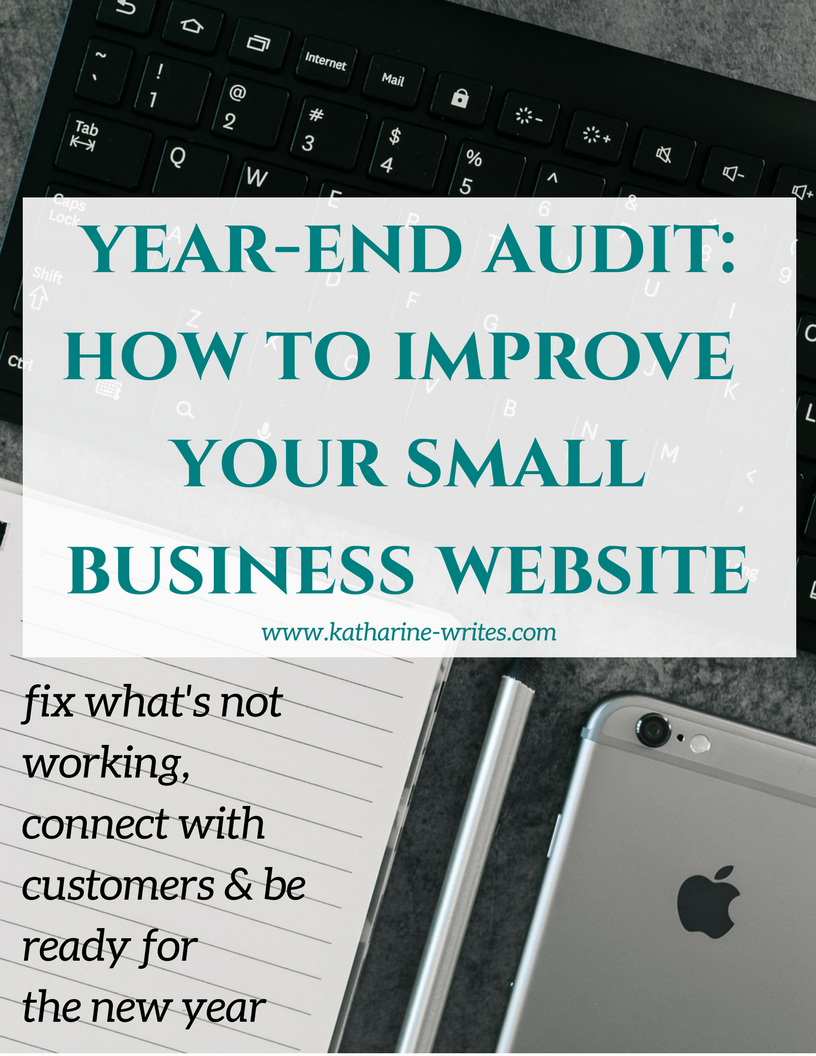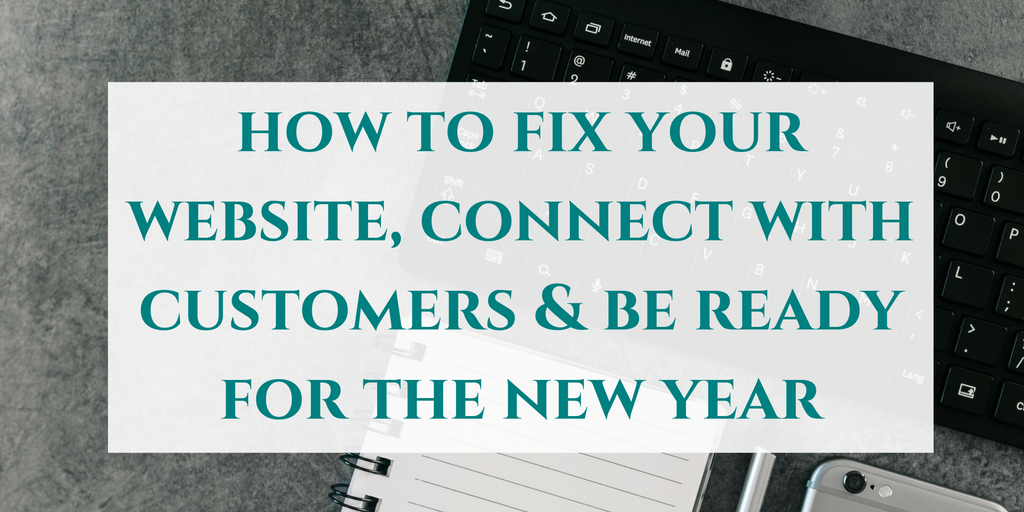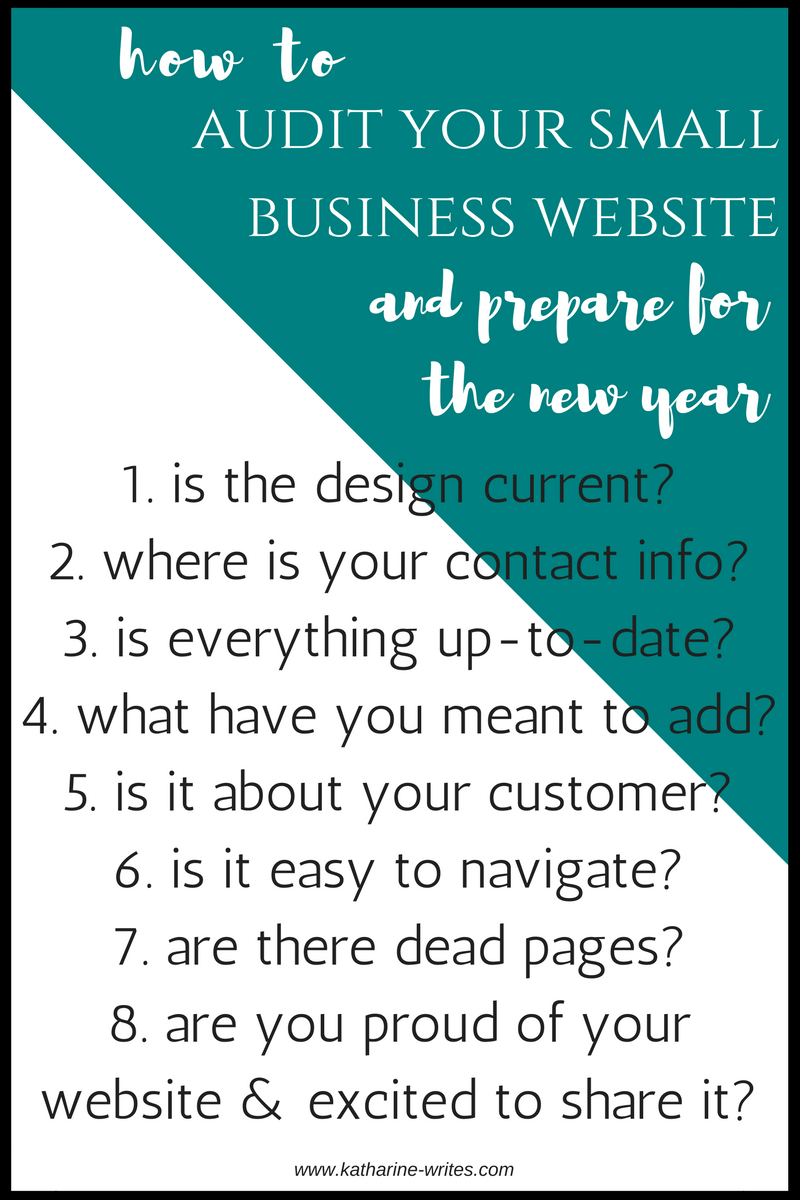
Depending on the type of business you run, the end of the year usually plays out one of two ways.
Either you are incredibly busy selling and shipping during the holiday rush of December, but January is a slow month.
Or, your business slows down during December, but you step things up in January, looking for new clients and new opportunities.
Whichever model sounds right, you are likely to have at least one slow month between November and January. And while slow months can feel panic-inducing for small business owners, they are actually a great opportunity to make time for your business.
When you’re constantly busy with customers, it can be difficult to give your business the attention it both needs and deserves.
So this year, don’t panic when your slow month rolls around.
Use the extra time to do a thorough audit of your online presence and fix all the little things you never make time for. First up: your website.

1. Is your design current for your industry?
Few things will turn off new customers faster than an outdated website.
Your audience spends a lot of time online, both on their computers and on their mobile devices. And if your website looks outdated or cluttered compared to your competitors, you’re hurting yourself right out of the gate, before your customers get anywhere near the services or products you’re offering.
Take a look at your competitors, especially the major players in your niche, to see how your website stacks up.
Does your design seem current and functional? Does the amount of white space and color you have seem appropriate to your industry? Are your design elements — such as video, audio, buttons, and sidebars — starting to seem outdated?
You might also like: WordPress Themes For Small Businesses
You don’t need to copy the design of any of your competitors. You want your website to stand out and look unique. But it’s important to strike a balance between “unique” and “out of place.”
Make sure your site looks as current and relevant as possible if you want customers to stick around.
2. Are your social accounts and contact info easy to find?
As a small business, your relationship with your customers is one of your biggest assets.
Make sure you develop — and preserve — that relationship by being easy to find and simple to contact.
Have a designated contact page with ways for customers to get in touch: email, phone, a contact form directly on the page, or all three.
You might also like: Does Your Website Have… a (Useful) Contact Page?
If you have a physical location, list your address and hours. Provide an interactive map that is easy to use.
If you have multiple departments, such as customer service or press inquiries, list separate contact emails and names to make getting in touch as straightforward as possible.
And if you have social media accounts — which you should — make them easy to access with buttons that link directly from your header or footer.
3. Is the information on it up to date and current?
It’s easy to get behind on updating your website.
You hired a new PR manager, but the old PR manager’s name and picture are still on the employee bio page. You changed the price of a package on its PayPal page, but never got around to updating it on your own site.
You got new headshots. You started an Instagram account. You have a couple guest posts up on another site.
Are you missing important pages like an FAQ or a blog?
You might also like: Does Your Website Have… an FAQ Page?
Did you add calendar but never fill in any upcoming events?
Whatever you’ve been meaning to update but haven’t got around to actually taking care of, this is the time to do it.
Make sure all the information on your website is as current as possible.
4. What have you been meaning to add or change?
Similarly, you may have made — or want to make! — changes in your business and services, but haven’t been able to launch them because you never got around to adding them to your website.
The page with your experience as a speaker that you’ve been meaning to put together? Now is the time to write it up and ask for testimonials to include.
The new package you’ve been thinking about adding to your services? Get the payment page set up and add the link in.
The new inventory that’s been sitting in storage for the past two months? Photograph it and add it to your shop.
The opt-in bonus that you keep telling yourself you’re going to create? Set aside the time to write, format, and upload it.
Whatever you’ve been meaning to add to your business, now is the time to get it up on your website so it’s ready to go in the new year.

5. Is your website about you, your business, or your customer?
Yes, your website is for your business. And yes, you may be the face of your brand and the voice of your company.
But your website really needs to be about your customers.
Their struggles. Their needs. How they will benefit.
Because ultimately, people don’t want to buy. They want to benefit.
They want to know how your business is going to solve that problem that in their lives that needs solving. So no matter what you’re writing — from an about page and bio to a description of a pair of socks to a blog post about estate planning — it should be about your customer and why your business is the best choice to help them.
If that’s not what your website is about, it’s time to do some rewriting.
6. Is it easy to navigate?
There are a lot of websites out there.
There are a lot of companies in your industry.
That means your customers have a lot of options out there. And on the internet, the option that’s easiest and fastest is often the one that wins.
Keep your menu easy to find and your page names straightforward. Make sure information lives where people will expect it to live. Create an easy to move between shopping and checking out.
You might also like: The Best Way to Scare Off Customers and Hurt Your Business
Update your links so there aren’t too many error pages popping up. When you do have an error page, include links to pages that might be what your customer was looking for in the first place.
Make sure your website loads quickly on mobile with a responsive design for easy browsing.
You won’t convince customers to give you their time, money, or trust if your website is difficult to navigate.
So if there’s anything about your website that makes it difficult to get from point A to point Buy, use the end of the year as an opportunity to fix it.
7. Do you have any dead pages?
A dead page goes nowhere.
It doesn’t link to other pages. It doesn’t encourage visitors to learn more, browse further, read another article, give you their email, or view another product.
It’s a dead end that does nothing to contribute to your sales funnel or connect with your audience.
You might also like: How to Audit Your Website for Errors and Improvements
It’s a drain on your business and a waste of everyone’s time.
Take a look through your website and see if you have any dead pages.
If there are any, find a way to rework them so that they link back to the rest of your website and encourage customers to keep going.
8. Do you feel proud of your website and want to share it?
Finally, the big question that tells you whether you need to update or change your website: are you proud of it?
When people ask about your business, do you want to send them to your website?
Do you have it linked on your email signature and social media accounts? Is it prominent on your business cards?
If not, ask yourself why.
You might also like: 17 Ways to Make Your Brand Stand Out Online
What’s making you hesitate to share the online hub of your business?
Be honest with yourself about what prevents you from feeling confident about your site.
And then, use this time as an opportunity to fix whatever is holding you back so you’re proud to share your website in the new year.
Leave a Reply